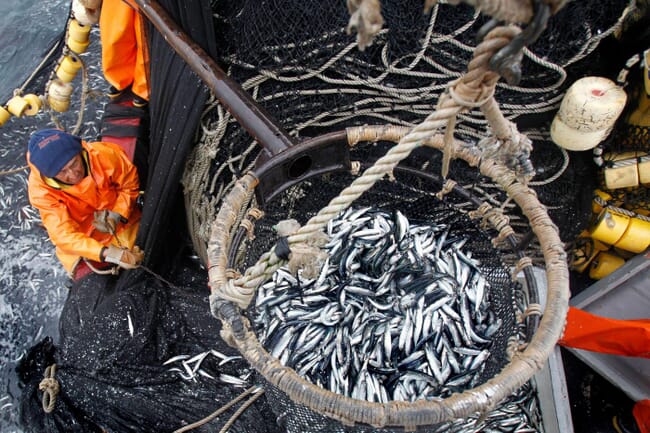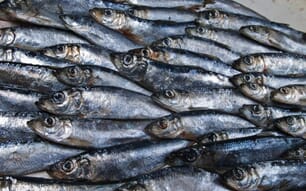
The SFP's sustainability ratings of the anchoveta fisheries in southern Peru/northern Chile and Chile Valparaíso - Los Lagos; as well as the Araucanian herring fishery in central-south Chile, have dropped © Alamy
A new report by SFP examined 11 of the world’s largest reduction fisheries, largely those in Europe and South America. It concludes that, compared to 2022, two European fisheries (the sprat fishery in the North Sea and Kattegat and the Dogger Bank sandeel fishery) improved their sustainability, while three South American fisheries (the anchoveta fisheries in southern Peru/northern Chile and Chile Valparaíso - Los Lagos; as well as the Araucanian herring fishery in central-south Chile) dropped.
“The majority of fisheries assessed continue to be reasonably well managed or better, but performance has been slowly declining since 2018,” said SFP in a press release.
“Six months ago, our last report recognised rebounds and the industry’s role in supporting improvements in key European reduction fisheries. And, in this new report we see two more European fisheries regaining lost ground,” said Dave Martin, program director at SFP. “But South America is headed in the opposite direction. We hope this will motivate industry, science, government and other stakeholders to come together to reverse this trend.”
The 2023 report marks part 1 of the 14th edition of SFP’s assessments. These evaluate key fisheries, based on sustainability scores in FishSource, SFP’s public database of fisheries information. Part 2 is expected to be published in March 2024.
South American countries like Chile and Peru are recognised global leaders in the production of marine ingredients. Countries like Chile and Ecuador are also leaders in production of farmed seafood. Throughout SFP’s annual assessments, reduction fisheries in the region have consistently demonstrated middling performance, particularly in FishSource management strategy scores.
The drop in performance of three South American Fisheries make these three of the four fisheries in the lowest sustainability category (Category C – poorly managed), after recent improvements in European fisheries.
The stalled or declining performance in these fisheries, compared with the recent turnaround in several European fisheries, highlights the importance of increased regional cooperation on shared fisheries, and the critical role that pre-competitive industry and multi-stakeholder collaboration has in improving fisheries management.
“There is a clear need for industry, governments, scientists and others to redouble efforts to support and deliver sustainable fisheries,” said Martin.




